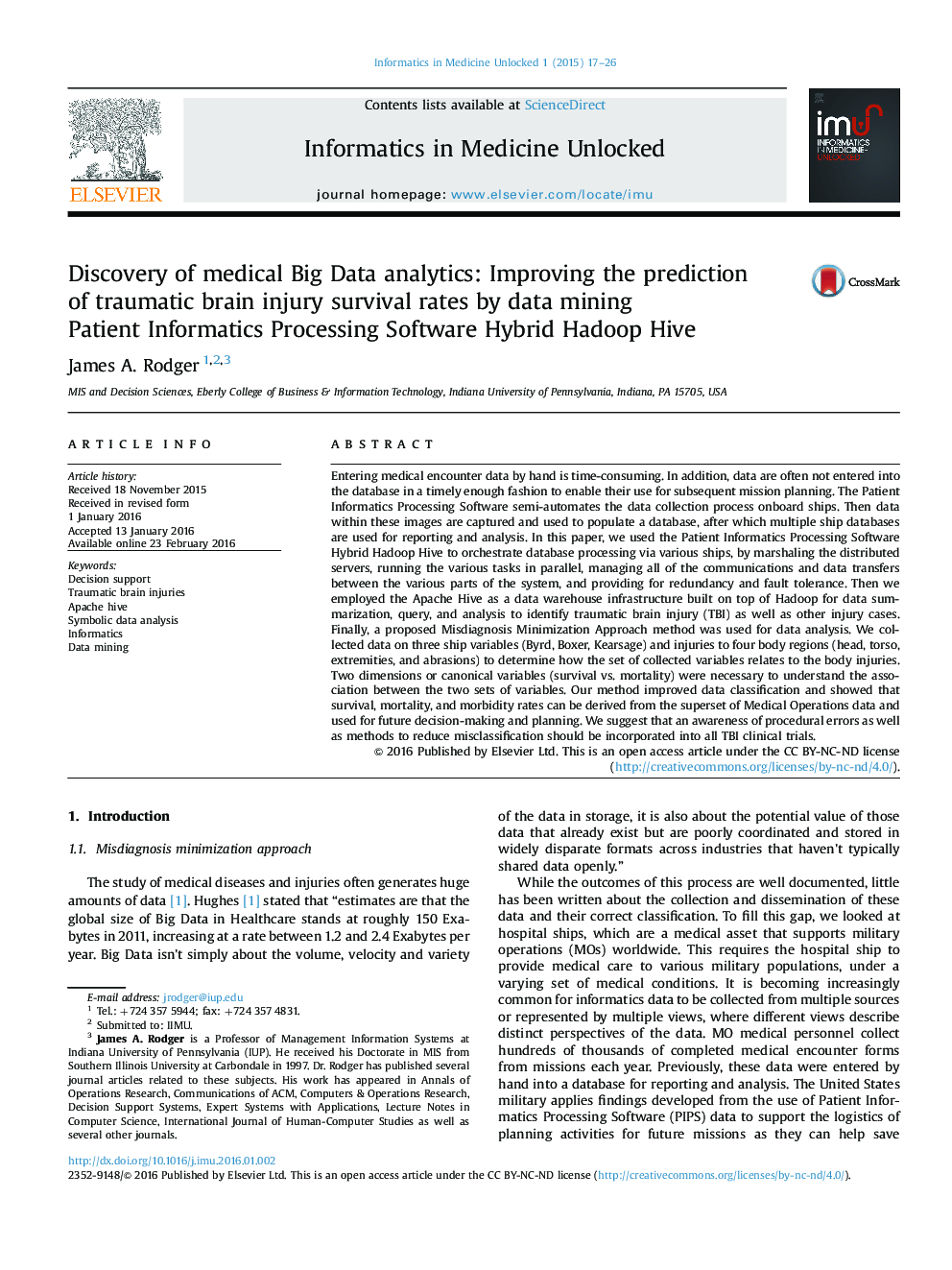| کد مقاله | کد نشریه | سال انتشار | مقاله انگلیسی | نسخه تمام متن |
|---|---|---|---|---|
| 483485 | 701434 | 2015 | 10 صفحه PDF | دانلود رایگان |
• PIPSH3 used to orchestrate the various ship medical database processing tasks.
• Employed Apache Hive Hadoop as a data warehouse infrastructure.
• Identified traumatic brain injury (TBI) as well as other head injury cases.
• Proposed MMA method to analyze the data collected on three ships.
• Improved classification and demonstrated that data can be used for planning.
Entering medical encounter data by hand is time-consuming. In addition, data are often not entered into the database in a timely enough fashion to enable their use for subsequent mission planning. The Patient Informatics Processing Software semi-automates the data collection process onboard ships. Then data within these images are captured and used to populate a database, after which multiple ship databases are used for reporting and analysis. In this paper, we used the Patient Informatics Processing Software Hybrid Hadoop Hive to orchestrate database processing via various ships, by marshaling the distributed servers, running the various tasks in parallel, managing all of the communications and data transfers between the various parts of the system, and providing for redundancy and fault tolerance. Then we employed the Apache Hive as a data warehouse infrastructure built on top of Hadoop for data summarization, query, and analysis to identify traumatic brain injury (TBI) as well as other injury cases. Finally, a proposed Misdiagnosis Minimization Approach method was used for data analysis. We collected data on three ship variables (Byrd, Boxer, Kearsage) and injuries to four body regions (head, torso, extremities, and abrasions) to determine how the set of collected variables relates to the body injuries. Two dimensions or canonical variables (survival vs. mortality) were necessary to understand the association between the two sets of variables. Our method improved data classification and showed that survival, mortality, and morbidity rates can be derived from the superset of Medical Operations data and used for future decision-making and planning. We suggest that an awareness of procedural errors as well as methods to reduce misclassification should be incorporated into all TBI clinical trials.
Journal: Informatics in Medicine Unlocked - Volume 1, 2015, Pages 17–26
